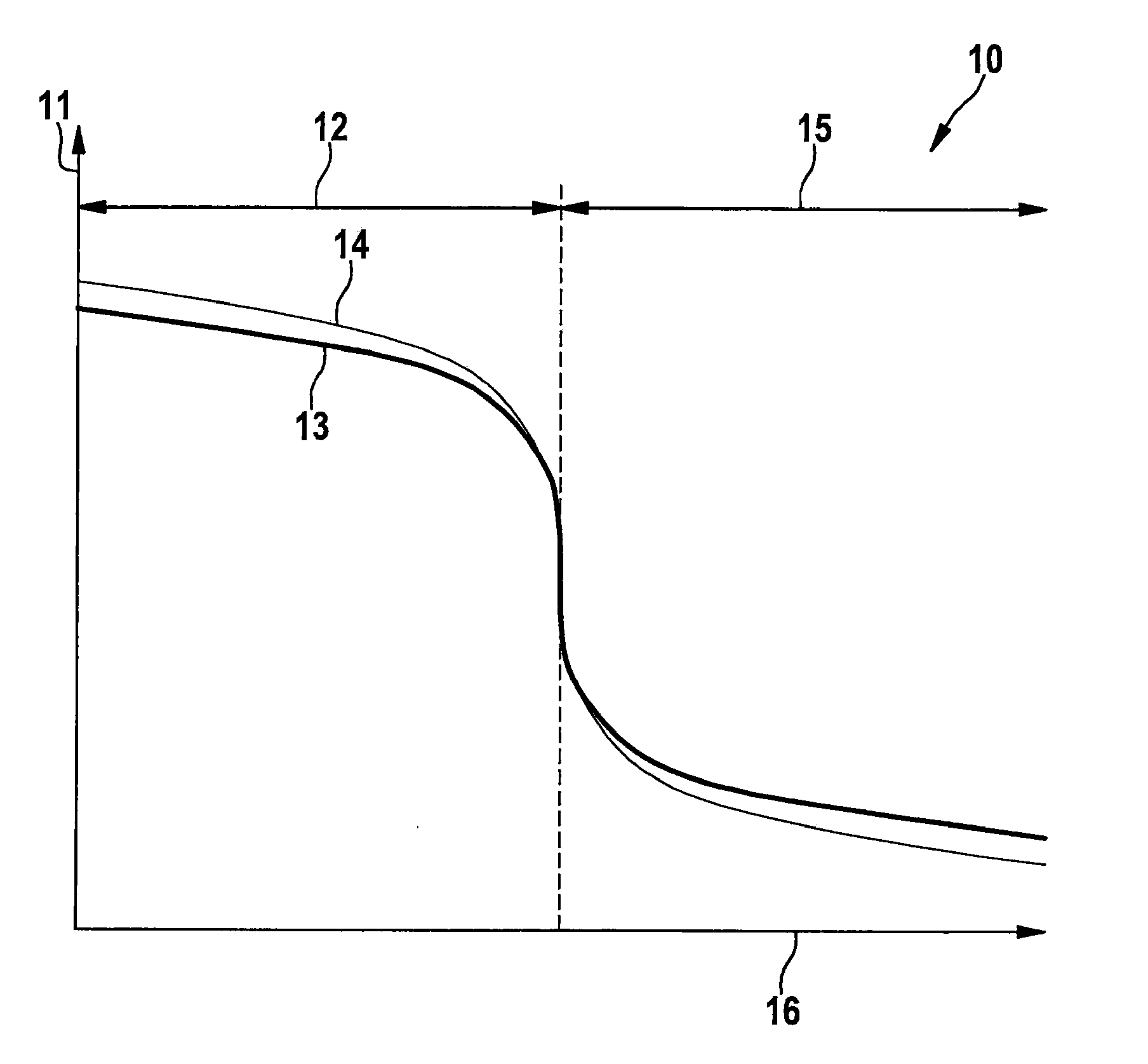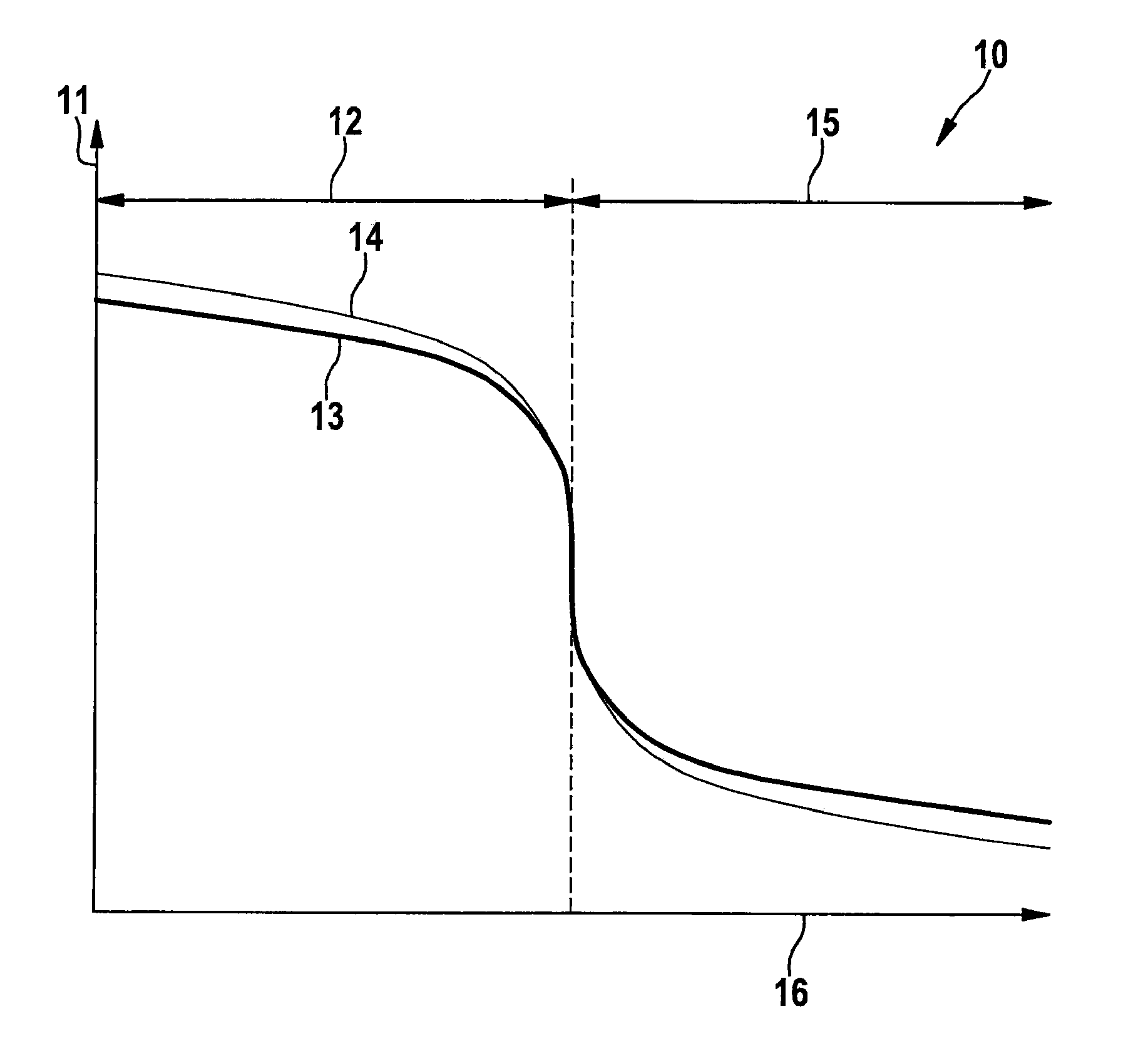Method and device for correcting a characteristic curve of a two-step lambda oxygen sensor
a lambda oxygen sensor and characteristic curve technology, applied in the direction of electrical control, exhaust treatment electric control, instruments, etc., can solve the problems of unacceptably high emissions, unsatisfactory accuracy of closed-loop control, and target lambda can only be precontrolled, but not controlled in closed-loop. the effect of voltage offs
- Summary
- Abstract
- Description
- Claims
- Application Information
AI Technical Summary
Benefits of technology
Problems solved by technology
Method used
Image
Examples
Embodiment Construction
[0033]For a brand-new, two-step lambda oxygen sensor under standard conditions, a reference-voltage lambda characteristic curve 13 applies. When reference-voltage lambda characteristic curve 13 is observed, a continuous control of an air-fuel mixture supplied to an internal combustion engine may also follow using a low-cost, two-step lambda oxygen sensor in an exhaust tract mounted upstream of a catalytic converter within a certain lambda range. There is also a unique relationship between the output voltage of the two-step lambda oxygen sensor, both in a rich region 12 where lambda 15 where lambda >1.
[0034]Tolerances and aging cause deviations that do not permit a long-term, continuous use of the two-step lambda oxygen sensor for this purpose. For example, if manufacturing tolerances, aging, as well as an increase in the temperature of the two-step lambda oxygen sensor induce a change in the characteristic curve, a voltage-lambda characteristic curve 14 is derived. This is not trans...
PUM
| Property | Measurement | Unit |
|---|---|---|
| voltage-lambda characteristic curve | aaaaa | aaaaa |
| voltage-lambda | aaaaa | aaaaa |
| voltage-lambda characteristic | aaaaa | aaaaa |
Abstract
Description
Claims
Application Information
 Login to View More
Login to View More - R&D
- Intellectual Property
- Life Sciences
- Materials
- Tech Scout
- Unparalleled Data Quality
- Higher Quality Content
- 60% Fewer Hallucinations
Browse by: Latest US Patents, China's latest patents, Technical Efficacy Thesaurus, Application Domain, Technology Topic, Popular Technical Reports.
© 2025 PatSnap. All rights reserved.Legal|Privacy policy|Modern Slavery Act Transparency Statement|Sitemap|About US| Contact US: help@patsnap.com


